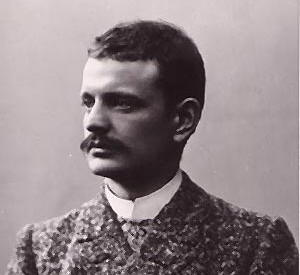 This past week the Toronto Symphony Orchestra and visiting conductor Douglas Boyd presented a particular fine reading of Jean Sibelius’s Symphony No. 2, making this a fine excuse to listen to it again.
This past week the Toronto Symphony Orchestra and visiting conductor Douglas Boyd presented a particular fine reading of Jean Sibelius’s Symphony No. 2, making this a fine excuse to listen to it again.
- Classical Music 101: What Does A Conductor Do? - June 17, 2019
- Classical Music 101 | What Does Period Instrument Mean? - May 6, 2019
- CLASSICAL MUSIC 101 | What Does It Mean To Be In Tune? - April 23, 2019
The lifetime of Sibelius (1865-1957), like that of equally long-lived George Bernard Shaw (1856-1950), spans such major changes in Western society, politics and culture, that they lived in two different worlds — the Romantic and the Modern.
Both began their careers using the conventions and forms of the late 19th century and then, in the new century, gradually moved toward abstraction.
Shaw’s later plays can barely be called plays in any conventional sense. Sibelius started with the formal structures of classical symphony composition — themes carefully developed in a clear sequence, repeating them in variations in different keys and varying the mood of a symphony over the course of contrasting movements — and gradually distilled them into a tight, spare language of continuous thematic evolution.
Instead of themes in counterpoint, Sibelius increasingly turned to themes supported by ostinato — musical patterns that repeat over and over again (the literal translation from the Italian is ‘obstinate’).
Symphony No. 2, written as the centuries turned over, is the point of intersection of the Romantic Sibelius with the Modern Sibelius which, I think, makes the ideal point of entry. The traits that make it different from a typical Romantic symphony are those that Sibelius magnified in his later work.
I’m trying to keep this introduction short and simple, so here are the things I find most engrossing:
The traditional Romantic symphony typically relies on the strings as the source of theme and melody and development, with woodwinds and, occasionally, brass adding colour and volume. In this symphony, Sibelius still relies on the strings, but doesn’t hesitate to turn the tables, making the strings the adjuncts to important work happening in the woodwind and brass sections.
There is constant introduction of themes in various sections of the orchestra and passed around from instrument to instrument. Some are long; some are short. Some are assigned the task of making us think of a folksong; others serve a purely technical functions of either moving the music forward or setting a mood.
(This is hardly something unique to Sibelius, but he manages to do it with particular clarity and concision.)
One can listen many times and hear something different each time, especially in this fine concert performance for Swedish Television by the Swedish Radio Symphony and Esa-Pekka Salonen shortly after he became its chief conductor in 1985:
John Terauds
- Classical Music 101: What Does A Conductor Do? - June 17, 2019
- Classical Music 101 | What Does Period Instrument Mean? - May 6, 2019
- CLASSICAL MUSIC 101 | What Does It Mean To Be In Tune? - April 23, 2019



